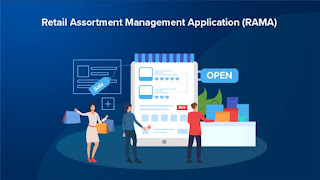Retail Assortment Management: Driving Profit Through Smart Assortment Planning
In today’s hyper-competitive retail environment,
personalization is no longer a luxury—it’s a necessity. Retailers are under
immense pressure to deliver the right products to the right place at the right
time. Enter Retail
Assortment Management Applications (RAMA): a new generation of intelligent
tools designed to transform traditional merchandising into a dynamic,
data-driven strategy. By leveraging real-time analytics and artificial
intelligence (AI), RAMA enables retailers to localize assortments, anticipate
customer needs, and optimize stock levels across regions—ultimately boosting
revenue and improving customer satisfaction.
The Power of Localization in Assortment Management
No two stores are alike, and neither are the customers they
serve. What sells in downtown Manhattan may sit untouched on the shelves of a
suburban outlet in Arizona. Retail
Assortment Management Applications tools recognize this nuance and empower
retailers to localize their assortments based on a variety of factors such as
demographic data, purchase behavior, regional preferences, and seasonal trends.
This tailored approach ensures that each store carries products that resonate
with its unique customer base.
Localization also extends to store clustering—grouping
stores by shared characteristics like size, foot traffic, or sales history.
RAMA solutions use advanced clustering algorithms to align product assortments
to each cluster’s profile, allowing for more efficient inventory allocation and
minimizing overstock or stockouts.
Real-Time Analytics for Smarter Decisions
One of the most significant advances in modern Retail
Assortment Management Applications platforms is their ability to deliver
real-time data analytics. These systems continuously analyze a retailer’s
operational and customer data to track product performance, monitor inventory
levels, and flag underperforming or high-demand items.
This instant visibility allows merchandising teams to make
agile decisions—such as adjusting stock levels, launching targeted promotions,
or reordering popular items—based on real-time insights rather than outdated
sales reports. It also supports in-season and pre-season planning, equipping
businesses with predictive capabilities that reduce guesswork and improve
responsiveness.
AI, Machine Learning, and the Future of Retail Planning
Retailers are increasingly investing in AI, machine learning
(ML), and advanced analytics to support a wide spectrum of merchandising use
cases. These technologies underpin RAMA
platforms with powerful capabilities, including:
Demand Forecasting: ML algorithms analyze historical
sales data, weather patterns, economic indicators, and even social media trends
to predict future demand at a granular level.
Automatic Capacity Recommendation: AI tools assess
shelf space, inventory turnover, and sales velocity to recommend the optimal
number of SKUs per category, per store.
Product Affinity Analysis: ML models identify which
products are frequently purchased together, helping retailers bundle offerings
or optimize shelf layouts to encourage higher basket values.
Stock Balancing and Replenishment: Intelligent
replenishment systems dynamically adjust restock orders based on real-time
sales and anticipated demand, reducing carrying costs and preventing lost
sales.
With these innovations, RAMA systems are evolving from
simple planning tools into sophisticated platforms for strategic retail
management.
Holistic Integration Across Retail Functions
Today’s Retail
Assortment Management Applications solutions are no longer siloed tools.
They are designed to integrate seamlessly with broader enterprise resource
planning (ERP), supply chain, and execution systems. Key features often
include:
·
Real-time assortment receipt planning
·
Pre-season and in-season item planning
·
Attribute-based product planning
·
Financial planning tied directly to merchandise
performance
·
Intelligent allocation and distribution systems
·
Visual dashboards and actionable reporting
·
API-enabled integration for smoother
collaboration across departments
This interconnected environment promotes cross-functional
visibility and ensures consistency between strategic plans and store-level
execution.
Meeting Customer Demand with Precision
One of the core promises of Retail Assortment Management
Applications is its ability to adjust stock levels in anticipation of changing
demand patterns. Rather than relying on static or manually updated models,
today’s applications continuously refine their predictions based on new data
inputs. This means fewer overstocks, fewer markdowns, and more full-price
sales.
Additionally, intuitive dashboards and reporting
capabilities give retail managers the insights they need to monitor
performance, identify emerging trends, and act proactively. Whether it’s
reallocating fast-selling items from one store to another or phasing out
underperformers, RAMA tools enable precision retailing at scale.
Conclusion: From Data to Delight
Retailers that embrace Retail Assortment Management
Applications are positioning themselves at the forefront of
customer-centric commerce. By leveraging AI, real-time analytics, and localized
planning, they not only optimize assortments but also create more meaningful
shopping experiences.
As competition intensifies and customer expectations evolve, the ability to deliver the right product mix—customized for each location and powered by intelligent insights—will separate market leaders from the rest. RAMA platforms are no longer optional; they are essential to the modern retail playbook.
.png)


Comments
Post a Comment